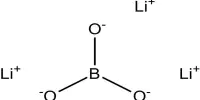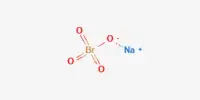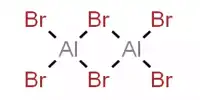Sodium fluorosilicate is a chemical compound with the formula Na2[SiF6]. It is less soluble in water than other sodium salts. It is most commonly found as a white crystalline powder or granules. It is a white, crystalline powder that is water soluble. It is commonly used in water fluoridation programs as a source of fluoride ions. It is mixed into municipal water supplies to prevent tooth decay and improve dental health. Because of its insecticidal properties, it is used as an ingredient in some pesticides and insecticides.
Properties
- Chemical formula: Na2[SiF6]
- Molar mass: 188 g/mol
- Appearance: white granular powder
- Odor: odorless
- Density: 2.7 g/cm3
- Solubility in water: 0.64 g/100 mL (20 °C); 2.45 g/100 mL (100 °C)
- Solubility: insoluble in alcohol
- Crystal structure: trigonal
Natural occurrence
Sodium hexafluorosilicate occurs naturally as the rare mineral malladrite found within some volcanic fumaroles.
Manufacturing
Sodium fluorosilicate is made by neutralizing fluorosilicic acid with sodium chloride or sodium sulfate.
H2[SiF6] + 2 NaCl → Na2[SiF6] + 2 HCl
Possible application
It is used as an additive in some countries for water fluoridation, opal glass raw material, ore refining, or the production of other fluoride chemicals (such as sodium fluoride, magnesium silicofluoride, cryolite, and aluminum fluoride). It is used as a fluxing agent in the production of glass and ceramic products. It lowers the melting point of materials, improves glass clarity, and improves the properties of ceramic glazes.
It can be used to provide corrosion resistance and improve surface properties in metal surface treatment processes such as aluminum anodizing. It is used in a variety of chemical reactions and laboratory procedures as a chemical reagent.
Toxicity
If consumed or inhaled in large quantities, sodium fluorosilicate is toxic. It may irritate the skin, eyes, and respiratory system. It is critical to handle this compound with caution and to adhere to the established guidelines for its use.
Sodium fluorosilicate is not easily biodegradable and can harm aquatic organisms if released into bodies of water. To mitigate potential environmental harm, proper disposal practices and adherence to environmental regulations are required.













